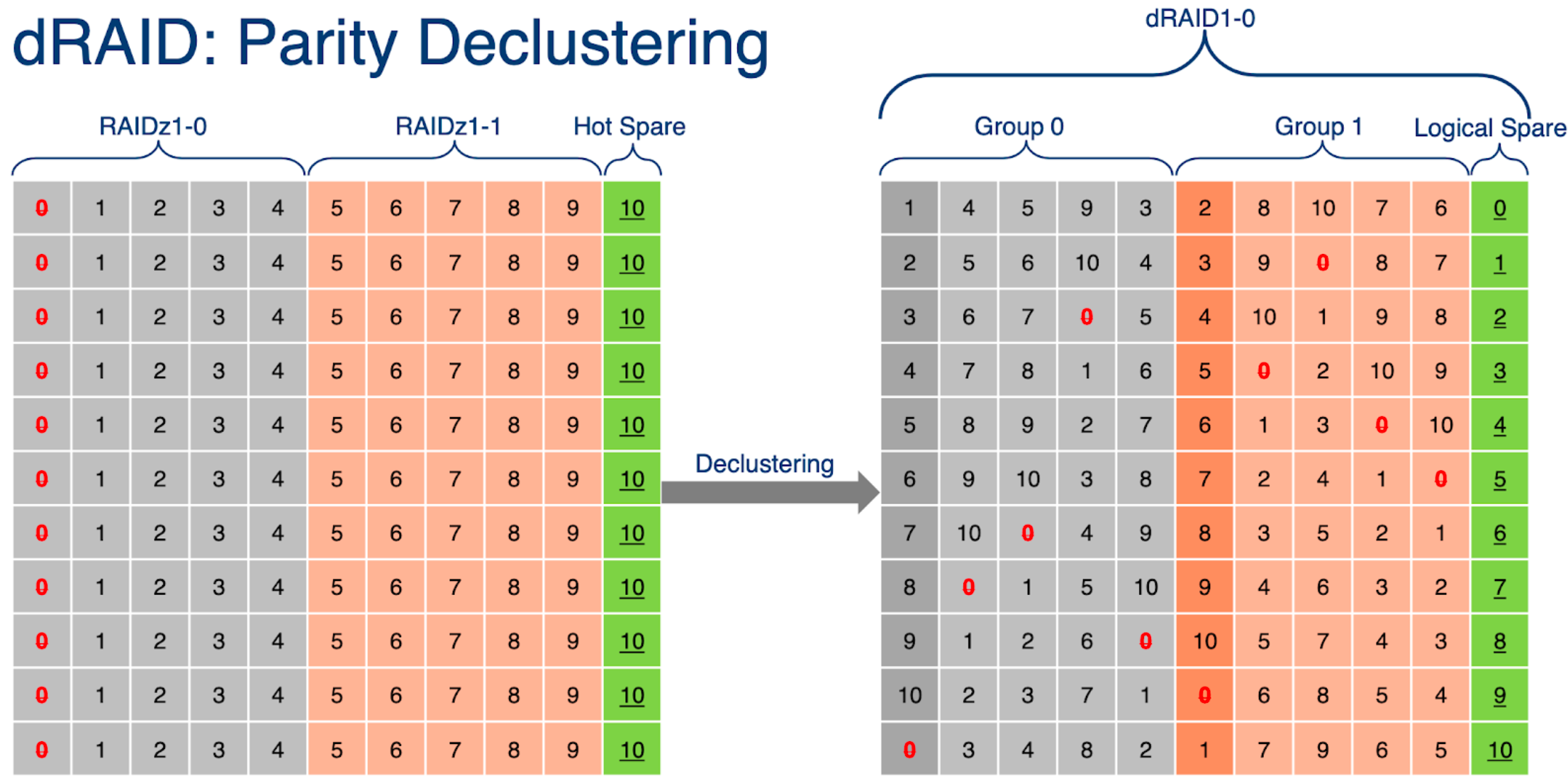
Segments are still stored on different disks which preserves redundancy. Last but not least, each logical stripe is independent making it unnecessary to know where parity is. Spacemaps reveal what data needs to be copied. DRAID Persistent L2ARC Adaptive Compression (compress more when not busy) Smart Compression (file based heuristic) Platform specific ShareNFS property handling. And when DRAID is considered stable, mostly likely add it to the GUI. Read also : OpenZFS 2.0.0 Release Unifies Linux, BSD and adds new features.
#Openzfs draid upgrade#
TrueNAS SCALE 22.02 and TrueNAS 13.0 use OpenZFS 2.1. OpenZFS replaced the old pool version number with Feature Flags, since features would land in different orders. Almost certainly they will upgrade to OpenZFS 2.1. By Jean Jacques Maleval Jat 2:31 pm To read this article from ars TECHNICA, click on: OpenZFS 2.1 is out let’s talk about its brand-new dRAID vdevs dRAID vdevs resilver very quickly, using spare capacity rather than spare disks. Reads and writes are performed sequentially. OpenZFS 2.1 included more performance improvements and dRAID (distributed RAID). Reflowing data doesn’t change or read block pointers. It works with RAIDZ-1/2/3.īelow are two figures illustrating the difference in how traditional expansion of RAID 4/5/6 works (Fig 1) versus how this new RAID-Z Expansion Feature works (Fig2). However, pools must be healthy and if a disk were to die, the process will pause to allow for it to be reconstructed. The reflow happens online, while other zfs and zpool operations are also in progress.Įxpansions can be made multiple times. Newly written data will use the new logical stripe width with an improved data to parity ratio. The reflowed data retains the original logical stripe width, meaning the ratio of data to parity will remain the same. OpenZFS' Distributed Spare RAID is described as a 'pool configuration that allows all dRAID vdevs to participate when rebuilding to a distributed hot spare device.
#Openzfs draid free#
In so doing, a new adjacent chunk of free space is created at the end of the logical RAID-Z group and thus at the end of each physical disk. First up, OpenZFS 2.1 is bringing a new feature called Distributed Spare RAID (dRAID).
#Openzfs draid plus#
The feature reflows existing data, essentially rewriting it onto a new arrangement of disks – meaning the original group plus a newly added disk. The purpose of this overview is to introduce the feature and explain how it works.

The feature was developed by Matthew Ahrens and is now completed but not yet integrated. dRAID is a variant of raidz that provides integrated distributed hot spares which allows for faster resilvering while retaining the benefits of raidz.

The project came in under budget despite delays caused by the pandemic.

The FreeBSD Foundation funded the project to ensure the completion and release of an easy-to-use and practical application. The Foundation sponsored feature reflows existing data to rewrite it onto a new arrangement of disks thereby freeing space at the end of the logical RAID-Z group


 0 kommentar(er)
0 kommentar(er)
